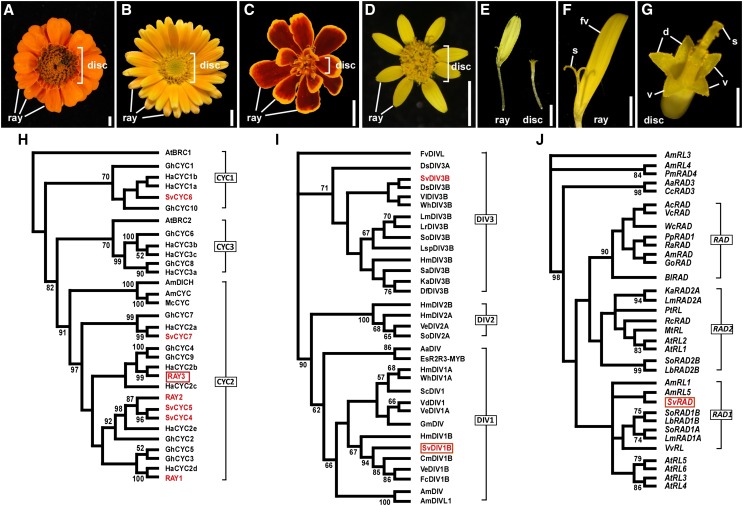Figure 1.
Capitulum and floret morphology in Asteraceae. A to D, Capitulum of Zinnia elegans (A), Calendula officinalis (B), Tagetes patula (C), and S. vulgaris (D). E to G, zygomorphic ray (E and F) and actinomorphic disc (E and G) floret of S. vulgaris. d, Dorsal petal; fv, fused three ventral petals; S, stigma; V, ventral petal. Bars = 5 mm (A–D), 2 mm (E), 1 mm (F), and 0.5 mm (G). H to J, ML phylogenetic tree analyses showing floral symmetry gene relationships among several species. ML trees were generated based on 99 amino acids including the conserved TCP and R domains for CYC, 95 amino acids that included the conserved SANT domain for DIV, and 83-bp DNA sequences including the conserved SANT domain for RAD. S. vulgaris (Sv) genes are colored in red. H, RAY3 clusters together with HaCYC2b (red rectangle). I, The ML three major clades are labeled as DIV1, DIV2, and DIV3. SvDIV1B protein falls into the DIV1 clade (red rectangle). J, SvRAD grouped with AmRL5 (red rectangle). See “Materials and Methods” for the species abbreviations. Bootstrap values (500 replicates) greater than 50% are shown.

